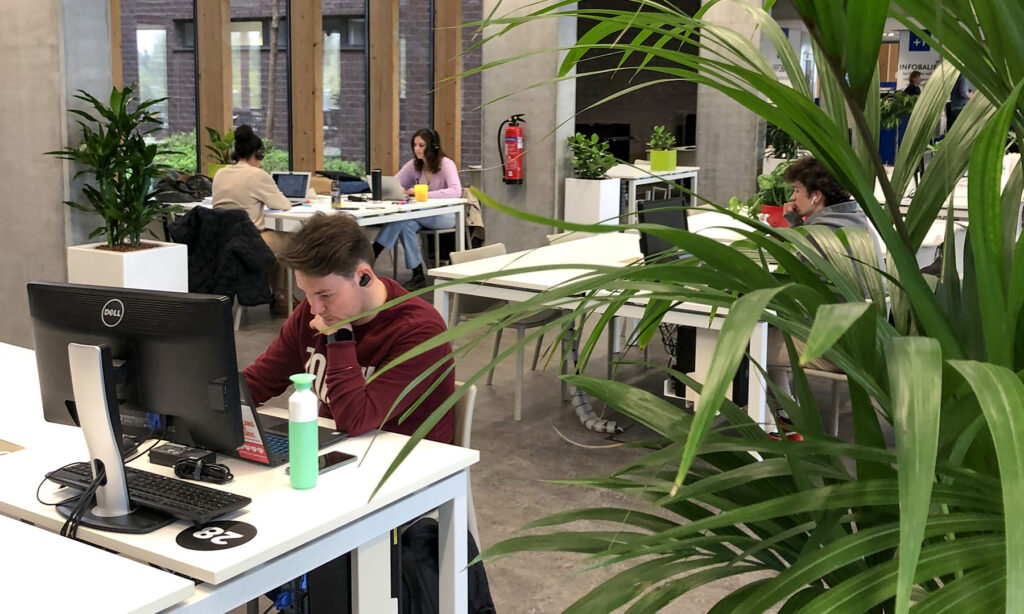In spring 2024, Ghent University‘s Faculty of Bioengineering and HOGENT, through the 360° Care and Wellbeing Research Centre, together with enthusiastic partners, unveiled the results of a progressive project called “Study green”. This initiative, which ran from 2 May to 1 July 2022, sought to transform traditional study spaces into refreshing green oases. The aim was to address the rising trend of stress, overwork and burnout among students – problems that not only affect more adults but also have a significant impact on young people.
The importance of mental wellbeing
The need for this initiative was driven by a growing awareness of the importance of mental wellbeing, in addition to academic and organisational support. Given the increasing pressure experienced by students, it was time to create an environment that not only promotes learning, but also supports emotional and psychological health. Thus, study areas were transformed into green refugia, where students could experience the calming presence of plants and natural greenery.
Impact of green spaces on wellbeing
The impact of these green spaces on students’ well-being was carefully evaluated through surveys, in which students reported their stress levels before and after studying. The findings were revealing. Students in green environments not only reported a significantly greater decrease in stress compared to those in non-green zones, but also a noticeable increase in positive emotions after their study periods.

“Students who saw houseplants when they looked up from books reported less stress. They generally had much more positive feelings,” explained Thibaut D’huyvetter, project coordinator at UGent. “The most striking thing for me is that it appears to be a cumulative effect. Those who studied more often among greenery had less stress at the start of a study session anyway.”
These results suggest that incorporating natural elements into any study environment can be a valuable strategy to promote student wellbeing.
“Still, it seems to D’huyvetter a good idea to bring some houseplants into the house during the block anyway. Although that actually applies to any work environment,” he says. “Just make sure you always have the plants within your field of vision when you look up. In the library on the Coupure, we saw afterwards that students now take the plants that were on the cupboard there to put them on the desk in front of them.”

Future directions and innovative perspectives
“Study green” serves not only as an important step towards creating a healthier study environment but also as inspiration for future initiatives aimed at the physical and mental well-being of students. The project highlights the need for a holistic approach to education, where the learning environment is as important as the learning content itself.
Further research into the microbiome of students’ skin may shed even more light on the links between the physical environment and mental well-being. This part of the research, led by Dr Chris Callewaert, promises to offer new insights into how our environment interacts with our bodies on a microscopic level and influences our minds.
“Study green” illustrates a future where well-being, sustainability and academic excellence merge seamlessly, providing a valuable blueprint for developing supportive and healthy study environments.
